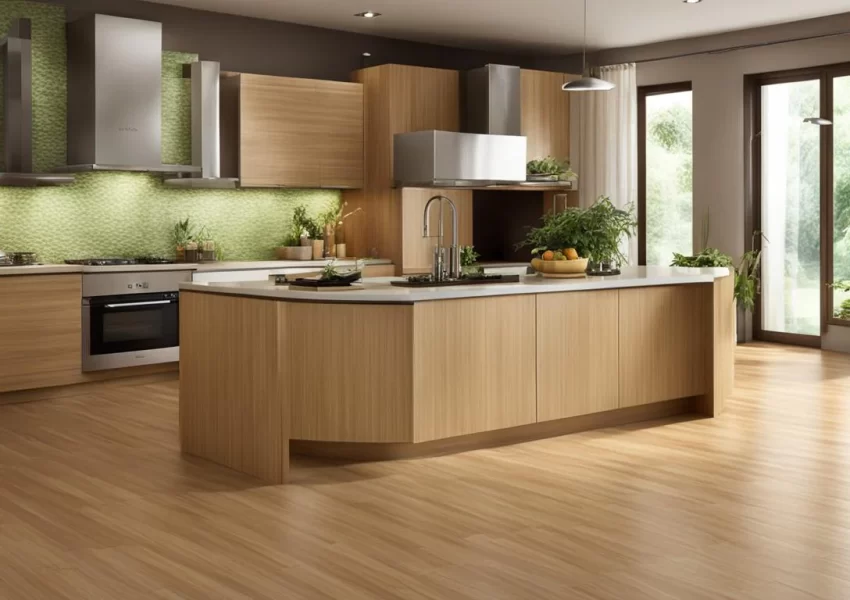Integrating sustainable flooring into your design doesn’t have to be difficult. Choose from a variety of materials that prioritize sustainability, while still offering beauty and style.
Bamboo is a popular option for eco-friendly floors, thanks to its fast growth and durability that rivals traditional hardwoods. Cork floors are harvested without harming the trees, while linoleum offers a blend of style and sustainability.
Bamboo
Bamboo floors are durable, aesthetically pleasing and come in many finishes. They are harder than hardwoods and resist moisture and dents. The strand-woven type is a very eco-friendly option. It is made of shredded and glued strands. It is also available in carbonized styles which dye the flooring and are much more durable than traditional hardwoods.
Bamboo is a rapidly renewable resource, which makes it an environmentally friendly choice. However, the fertilizers, pesticides and clear-cutting that have become commonplace to keep up with demand detract from its green status. In addition, the bamboo used in flooring comes from China where labor laws are questionable.
Cork
Cork is a very eco-friendly flooring material. Only the bark of the cork oak tree is harvested, allowing the tree to continue to grow, making this an extremely renewable resource. Cork is also naturally water resistant, preventing water damage and mold growth in your floors.
Cork’s honeycomb structure makes it very resilient and shock absorbent. This helps prevent dents and marks from heavy furniture or high heels. It can also help protect fragile dishes and other items from breakage.
However, cork can fade from excessive sunlight and humidity in your home or office. Taking precautions like using felt floor protector pads on your furniture and occasionally shifting it around will keep your cork looking great!
Reclaimed Wood
Reclaimed wood is a flooring material that is eco-conscious and stylish. It comes from old barns, factories and railroad trestles and has its own unique story to tell.
Choosing to use reclaimed wood reduces the number of trees that have to be harvested and milled for lumber, as well as keeps it out of landfills. It also saves on the energy it takes to recycle this type of wood.
Reclaimed wood can be used in a variety of ways, including as stair treads and railings. It is also a great option for paneling and wall framing. It’s important to purchase this type of wood from a trusted supplier that prioritizes low VOC emissions and sustainable practices.
Linoleum
Linoleum is a solid material that can be cut into different shapes and inlaid with decorative patterns. It’s durable enough to withstand the daily wear and tear of a busy family, and it has the added advantage of being non-allergenic.
It’s made from natural, renewable materials and can last several decades with proper care. It also has a lower energy footprint than other resilient floors and is biodegradable at the end of its life.
When shopping for linoleum, look for options that are free of RED List ingredients and have low VOCs. These lower VOC levels can help improve the indoor air quality of your home and minimize the impact on your health and the environment.
Concrete
Concrete has a lot to offer as an eco-friendly flooring material. The majority of the products that are used to colour and treat a polished concrete floor are solvent-free, meaning that they don’t release harmful toxins into the air.
Concrete floors also require very little maintenance and can last for a lifetime, making them more sustainable than other flooring materials. Additionally, concrete flooring is energy efficient as it radiates and absorbs heat, helping to lower heating bills in winter.
Furthermore, concrete floors can be made to incorporate recycled products such as metal shavings, crushed glass and marble chips. This helps to further decrease the intake of raw materials.
Terrazzo
Terrazzo’s durability and eco-friendly composition resonate with educational spaces, as schools are often required to meet rigorous sustainability standards. Healthcare facilities also prefer terrazzo’s seamless surface for infection control purposes.
Modern epoxy terrazzo products are poured with zero VOC materials that don’t off-gas over their lifecycle. This contributes to improved indoor air quality for sustainable buildings and can help earn LEED points.
Today’s terrazzo systems provide limitless design possibilities, allowing designers to explore unique aggregate combinations and color palettes for each project. Additionally, aluminum divider strips—used to control joints and specify a specific color change—can contain recycled content. These elements can be combined to create the ideal floor for any space, from bright clothing stores like The Webster to sober law firm working spaces.


